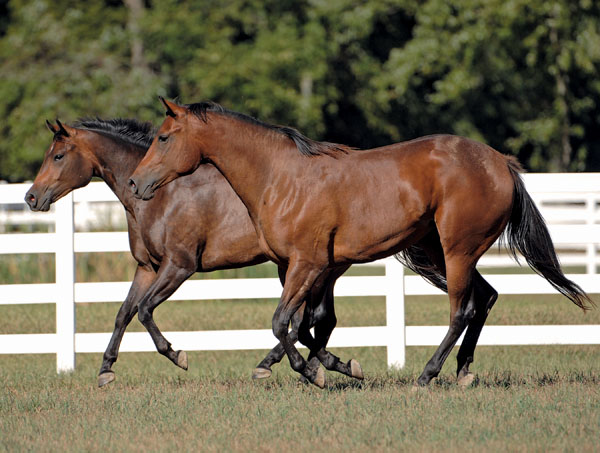If your horse is completely sound right now, congratulations—but don’t take it for granted. Instead, follow these key do’s and don’ts to reduce the odds that lameness will ever steal away your horse’s rideability.

DO provide proper, timely foot care. Set a regular schedule with a competent farrier or trimmer with a frequency that suits your horse’s needs. Some horses do best on a 4-week schedule; others can go as long as 6 weeks between trims or shoeing.
[READ: 7 Mistakes in Equine Hoofcare]
DO perform daily checks. Run your bare hands over your horse’s legs and scrutinize his feet every day. Once a week or so, put him on a short longe line and watch him trot briefly to check for subtle changes in movement. Get to know what’s normal for your horse, and you become your own early-detection system. You’re able to ice a leg, provide layoff, or call your vet if need be to fix a minor problem before it becomes major.
[READ: Know Your Horse’s Baselines]
DON’T let your horse be fat. Extra pounds put undue stress on his joints, tendons, and ligaments. Keep him in good flesh but not overweight.
DO mind his footing. Your riding area should be level and rock-free (check it often). It must also provide good traction and enough cushioning to protect legs from concussion without risking strain to tendons or ligaments. Use common sense when trail riding, and never turn a fresh horse out on footing that’s slick or slippery. If your horse overnights in a stall, make sure his bedding is deep enough to invite him to get off his feet and rest.
DO let him live outside, if possible. “Permanent turnout” is nature’s way of promoting circulation, hoof health, and overall fitness. If your horse must be stalled, provide as much turnout as you can, but safely. If he’s inclined to buck and play to extremes, turn him out after you work him, when he’s mellower—and less likely to hurt himself.
DON’T just get on and go. Avoid strains and sprains by providing a gradual warm-up before work sessions, starting with 10 minutes at an active-yet-relaxed walk. Cool down after rides to prevent stiffness and muscle soreness. Also, keep your horse in shape to handle the work you need him to do. Avoid “weekend warrior” syndrome, and bring him back to work slowly after any layoff. For extra protection, incorporate plenty of long, slow distance work—that is, walking—into your regular riding schedule.

DO consider protection. Work with your vet to decide when and what type of leg protection is warranted. Boots and leg wraps can help prevent injuries, especially when horses are being longed or round-penned. Too much coverage on a hot day, however, can increase the risk of heat-related soft-tissue injuries, so follow your vet’s recommendations. He or she can also advise you on measures such as icing, poulticing, and applying stable bandages after stressful workouts.
[READ: Tips on Icing Your Horse’s Legs]
DON’T torque legs. As you ride or groundwork your horse, think about how his action is affecting his legs. Overlong circling, round-pen work, or longeing—especially at the lope, on a small circle—can cause torque-related injuries. Strive for balance on turns and circles; if your horse is bending properly rather than leaning in, he’s less likely to strain his legs.






